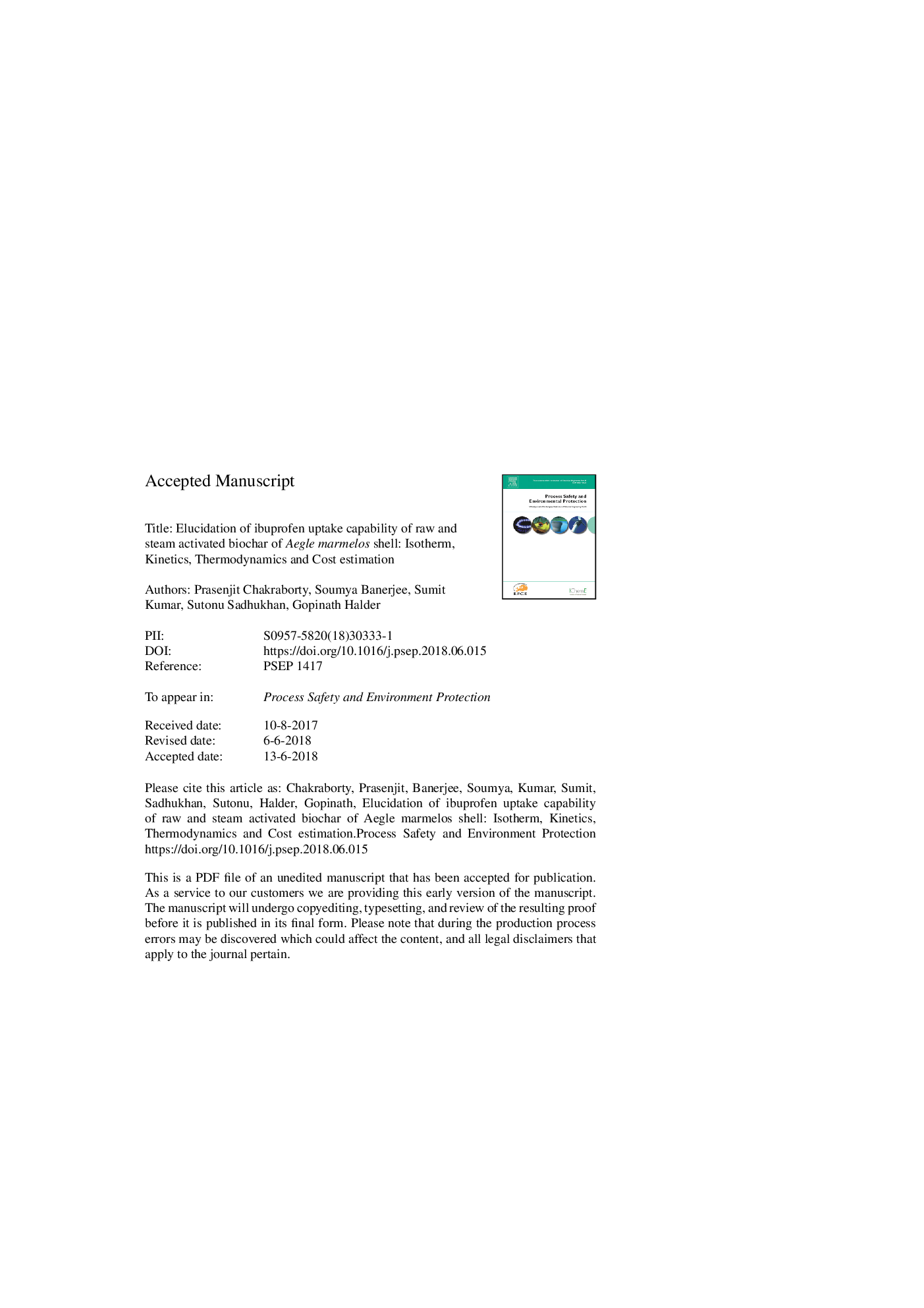| Article ID | Journal | Published Year | Pages | File Type |
|---|---|---|---|---|
| 6973851 | Process Safety and Environmental Protection | 2018 | 56 Pages |
Abstract
The present study investigates the sorption capabilities of raw and steam activated biochar derived from Aegle marmelos (wood apple) shell in the removal of ibuprofen (IBP) from aqueous solution. The influence of various parameters viz. initial ibuprofen concentration (1-45 mg Lâ1), contact time (0.5-24 h), temperature (15-45 °C), adsorbent dosage (0.033-3.33 g Lâ1), pH (2-6) and agitation speed (100-180 rpm) were considered for ibuprofen sorption by wood apple biochar (WAB) and wood apple steam activated biochar (WASAB). WAB and WASAB achieved maximum removal of 90% and 95% respectively from aqueous solution at 15 °C and 20 °C respectively. Optimum IBP removal was found at pH 2 for WASAB and 3 for WAB, dose 0.33 g Lâ1 for WAB and 1 g Lâ1 for WASAB, agitation speed 150 for WAB and 120 for WASAB, initial concentration of 15 mg Lâ1 and 30 mg Lâ1 for WAB and WASAB respectively and temperature of 15 °C for WAB and 20 °C for WASAB. Morphological analyses of the adsorbents suggested increase in active adhesion site after activation of the biochar.The elemental analysis showed an increase in carbon and oxygen percentage in the adsorbents, which confirm the existence of ibuprofen after adsorption. Ibuprofen sorption by WAB and WASAB followed Langmuir and Freundlich isotherms respectively and the process obeyed pseudo second order kinetic model in both the cases. The thermodynamic study suggested the process to be exothermic, spontaneous and feasible in nature. The cost estimation study indicated the cost-effectiveness of the indigenously developed adsorbents for their utilization in the removal of ibuprofen from contaminated water. Therefore, the biochar derived from the shell of Aegle marmelos exhibited potential role towards adsorptive removal of pharmaceutical compounds from aqueous solution.
Related Topics
Physical Sciences and Engineering
Chemical Engineering
Chemical Health and Safety
Authors
Prasenjit Chakraborty, Soumya Banerjee, Sumit Kumar, Sutonu Sadhukhan, Gopinath Halder,
